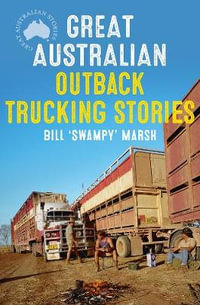'Water is vital to business: poor water quality or insufficient supply can curtail - or even shut down - activities in business operations and in the supply chain. The method laid out in the Water Footprint Assessment Manual fills an emerging and urgent business need for a means of understanding water consumption in operations and in the supply chain, assessing its sustainability, and devising effective response strategies.'
Monika Weber-Fahr, Global Business Line Leader for IFC's Sustainable Business Advisory
'Forty years down the road we will have 9 billion humans living on the Earth. Nearly fifty per cent more than what we have today. The impact of any activity, be it economic or social, will have an unprecedented print on water. It is, therefore, critical that policy makers and the public, let alone the political community, are aware of what the water footprint is, how it is established and how it does evolve in time and space. This book is a must for all those who wish to understand why and how water became the single most important commodity humanity has. But most importantly, it also provides methodologies of comparing the footprint of our various actions in order to strive towards sustainable water use.'
Professor A. Szollosi-Nagy, Rector, UNESCO-IHE Institute for Water Education
'The Global Water Footprint Standard comes at a time when companies in all sectors are awakening to the risk that water scarcity poses to their bottom lines and reputations. This work helps companies understand their dependency and impact on water resources, and offers guidance on response strategies that conserve water for industry, communities and nature.
Jim Leape, Director General of WWF International.
'Clean, fresh water is increasingly scarce world-wide for people and nature. It is therefore essential that businesses or citizens that want to act responsibly understand their water use and its impacts. The standardized methods developed by the Water Footprint Network to analyze and compare water uses are important in this respect. WWF applauds the publication of this guidance through which a valuable tool becomes available for everyone.'
Johan van de Gronden, CEO WWF-Netherlands
'We at DEG, member of KfW Bankengruppe, value water as one of the most important natural resources. We actively engage to finance entrepreneurial initiatives in the water sector aimed at creating a sustainable use of water. Congratulations to the second edition of the Water Footprint Assessment Manual, which can help our clients to understand better their water risks and opportunities in a globalizing economy.'
Dr. Peter Thimme, Director Sustainable Development, Environment, First Vice President, DEG
'A decade ago, the architects of the water footprint concept captured the world's interest by unveiling the volumes of water required to produce the goods we consume in our daily lives. Those water footprint numbers made us aware that personal and corporate responsibility for water use extends well beyond the walls of our homes or our factories -- it extends throughout the supply chains, particularly the farm fields, where water is consumed in delivering goods and ingredients to us. Now, with the publication of The Water Footprint Assessment Manual, we have come to appreciate the fact that true water stewardship is not solely about the volume of our water footprints - instead, it's about paying attention to where those footprints land, in local watersheds, and paying attention to the undesirable impacts that come with unsustainable water use. This Manual will be invaluable to anyone wishing to assess, and improve, the sustainability of their water use.'
Brian Richter, Managing Director of Global Freshwater Program, The Nature Conservancy
'Population growth and economic development is placing enormous pressure on our already scarce fresh water supplies. We produce water thirsty commodities in dry locations, we over allocate water resources within watersheds, and we continue to overwhelm our natural systems with pollution, placing more than 126,000 freshwater dependent species, as well as human beings, at great risk. The Water Footprint Assessment Manual is an extremely valuable tool and standard methodology that we hope will be widely adopted by governments, non-profits, corporations, and watershed managers to ensure the sustainability of producing various goods and services in various locations and to accurately report water use and management information across product supply chains and in watersheds.'
Russ Mittermeier, President, Conservation International
























